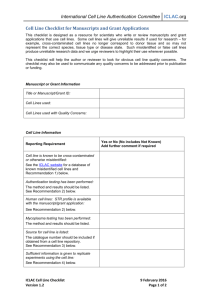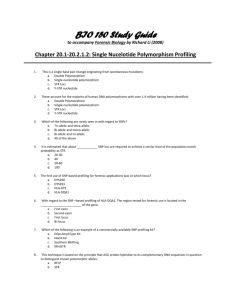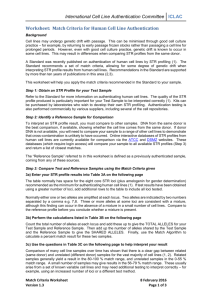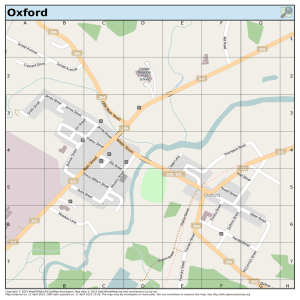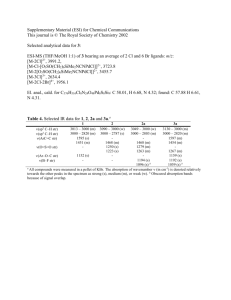International Cell Line Authentication Committee ICLAC Guide to
advertisement
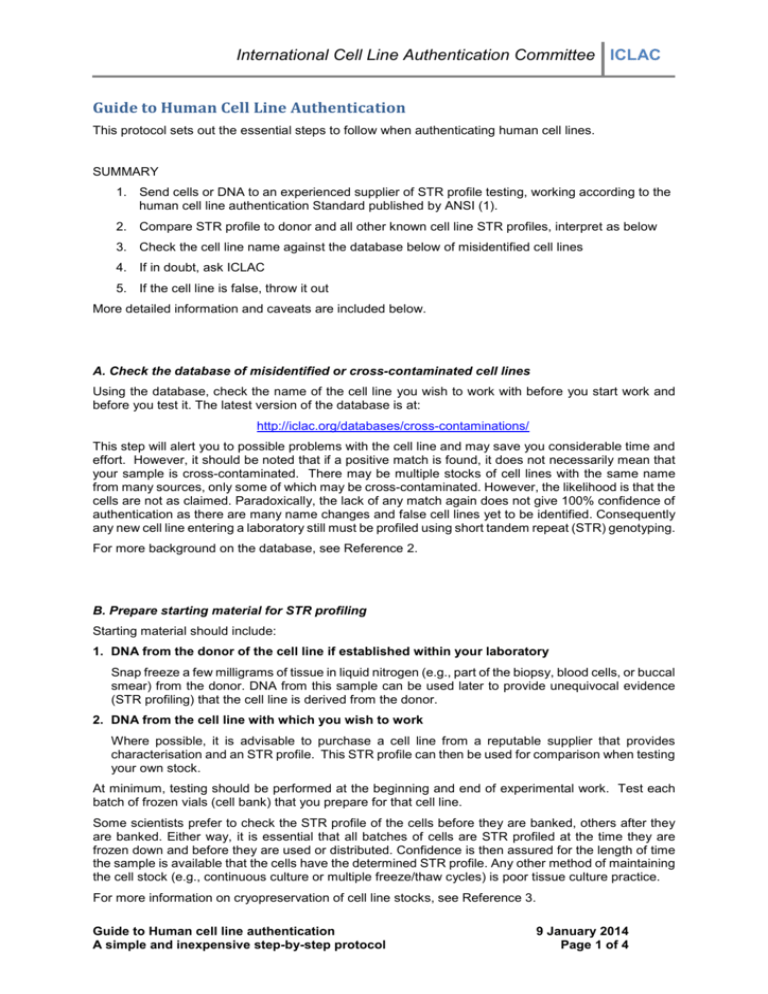
International Cell Line Authentication Committee ICLAC Guide to Human Cell Line Authentication This protocol sets out the essential steps to follow when authenticating human cell lines. SUMMARY 1. Send cells or DNA to an experienced supplier of STR profile testing, working according to the human cell line authentication Standard published by ANSI (1). 2. Compare STR profile to donor and all other known cell line STR profiles, interpret as below 3. Check the cell line name against the database below of misidentified cell lines 4. If in doubt, ask ICLAC 5. If the cell line is false, throw it out More detailed information and caveats are included below. A. Check the database of misidentified or cross-contaminated cell lines Using the database, check the name of the cell line you wish to work with before you start work and before you test it. The latest version of the database is at: http://iclac.org/databases/cross-contaminations/ This step will alert you to possible problems with the cell line and may save you considerable time and effort. However, it should be noted that if a positive match is found, it does not necessarily mean that your sample is cross-contaminated. There may be multiple stocks of cell lines with the same name from many sources, only some of which may be cross-contaminated. However, the likelihood is that the cells are not as claimed. Paradoxically, the lack of any match again does not give 100% confidence of authentication as there are many name changes and false cell lines yet to be identified. Consequently any new cell line entering a laboratory still must be profiled using short tandem repeat (STR) genotyping. For more background on the database, see Reference 2. B. Prepare starting material for STR profiling Starting material should include: 1. DNA from the donor of the cell line if established within your laboratory Snap freeze a few milligrams of tissue in liquid nitrogen (e.g., part of the biopsy, blood cells, or buccal smear) from the donor. DNA from this sample can be used later to provide unequivocal evidence (STR profiling) that the cell line is derived from the donor. 2. DNA from the cell line with which you wish to work Where possible, it is advisable to purchase a cell line from a reputable supplier that provides characterisation and an STR profile. This STR profile can then be used for comparison when testing your own stock. At minimum, testing should be performed at the beginning and end of experimental work. Test each batch of frozen vials (cell bank) that you prepare for that cell line. Some scientists prefer to check the STR profile of the cells before they are banked, others after they are banked. Either way, it is essential that all batches of cells are STR profiled at the time they are frozen down and before they are used or distributed. Confidence is then assured for the length of time the sample is available that the cells have the determined STR profile. Any other method of maintaining the cell stock (e.g., continuous culture or multiple freeze/thaw cycles) is poor tissue culture practice. For more information on cryopreservation of cell line stocks, see Reference 3. Guide to Human cell line authentication A simple and inexpensive step-by-step protocol 9 January 2014 Page 1 of 4 International Cell Line Authentication Committee ICLAC C. Perform STR profiling STR profiling can be performed in-house or outsourced. STR profiling should only be done in-house if it is routinely used and conforms to the criteria set out in the human cell line authentication Standard (1). For various reasons, the International Cell Line Authentication Committee (ICLAC) is not able to specify suppliers. Suppliers can be found online (e.g., by entering “cell line str profiling” or “cell line authentication” into your search engine). It is essential that the supplier chosen provides a rapid and reliable service with appropriate accreditation and quality assurance. The supplier should provide an STR profile and quality control data conforming to the Standard (1). Some suppliers ask for DNA, while others accept either cells or DNA. Suppliers may express a preference for samples spotted onto FTA paper, allowing shipping and storage at room temperature. A single T25 flask will provide more than enough cells or DNA to obtain an STR profile. If the laboratory cannot produce DNA that meets the quality required by the Standard (1), cells should be supplied. D. What to do with the result when it arrives: STR profile comparison An STR profile is obtained by PCR amplification of a set of STR loci. The profile consists of a series of numbers corresponding to the number of repeats seen at each allele for that locus – for example, 8 STR loci will give a maximum of 16 numbers (corresponding to 16 alleles) if all are heterozygous. A minimum of eight core STR loci plus amelogenin for sex determination (X or XY) are required for cell line authentication. Incidentally, cells can lose some of the Y chromosome in culture and therefore sex determination can only be regarded as indicative. The next step is to compare the STR profile to an appropriate reference sample – for example, DNA from the donor of that cell line. Guidelines on interpretation of results are given in the human cell line authentication Standard (1). A worksheet is available from ICLAC to summarise the essential concepts when comparing a test sample to a second reference sample (see References and Resources section). The result should also be compared to every other STR profile available using an online interactive database of human cell line STR profiles. Some STR genotyping service providers offer this service along with the profile. The cell bank databases currently available for comparison include: http://www.atcc.org/CulturesandProducts/CellBiology/STRProfileDatabase/tabid/174/Default.aspx http://www.dsmz.de/services/services-human-and-animal-cell-lines/online-str-analysis.html Additionally, a resource for human cell line STR profiles is currently under development by the National Center for Biotechnology Information (NCBI) as part of the BioSample database at http://www.ncbi.nlm.nih.gov/biosample/. The NCBI BioSample database is now accepting human cell line STR profiles from the community. Scientists and cell banks interested in submitting STR profiles to the database are invited to contact curation staff at biosamplehelp@ncbi.nlm.nih.gov for more information. Guide to Human cell line authentication A simple and inexpensive step-by-step protocol 9 January 2014 Page 2 of 4 International Cell Line Authentication Committee ICLAC Points to be aware of when comparing cell line samples: 1) To be completely certain that a cell line is authentic, you need to compare it to another sample from the same donor. For many cell lines, another donor sample is not accessible. In those cases, comparison to a database with STR profiles from many different cell lines will give you a high degree of confidence that your sample is not misidentified. 2) STR profiling does not allow you to distinguish between cell lines arising from the same donor. All cell lines from that donor will have the same, or highly similar, STR profiles. 3) A small amount of STR profile variation may be seen between cultures derived from the same donor. This can be caused by genetic drift with passage, particularly in cell lines with microsatellite instability. Variation may also relate to laboratory differences in test methods or interpretation. It is important to apply match criteria (80 % match threshold) as recommended by the Standard (1) to allow for a small amount of variation in some cultured samples. 4) Increasing the number of STR loci included in the analysis will increase the probability that the STR profile is correctly authenticated as arising from that donor. Eight STR loci plus amelogenin are recommended as a minimum (1) and are used in the databases listed above. To use an STR profile database: 1. You may be required to register the first time you use such a database. If so, have your log in and password information along with the STR profile you wish to compare, and log in to the system as your first step. 2. Enter your STR profile as set out in the search form. STR profiles include results for different loci (e.g., D5S818, TH01, amelogenin). For each locus on the search form, find the corresponding locus in your sample and enter its results. Results are given in the format “A,B” where A and B represent two different alleles present at that locus. You may not be required to enter all of the loci from your result. The online STR profile databases use a minimum set of loci; many of the current STR kits will amplify a greater number of loci. 3. Search the database to find the closest matches to your sample. Samples are compared using a match algorithm; search results will usually list the closest matches first. 4. To interpret your results, it helps to look at the percent match or EV value. Samples from the same donor generally yield a result in the 80-100 % match range (EV 0.8-1.0), while samples from different donors generally lie in the 0-55 % match range (EV 0-0.55). 5. It also helps to know the provenance of your cell line. Was it derived from another cell line, or are there other cell lines known to be established from the same donor? If so, these cell lines would legitimately have the same STR profile. A misidentified cell line is one where the STR profile fails to correspond to the expected donor, or where the STR profile unexpectedly corresponds to an unrelated cell line. E. What to do with misidentified cell lines If your testing shows that a cell line is misidentified, stocks of it should be discarded and any colleagues who have other stocks of that cell line should be informed. If you discover a novel cross-contamination, you may choose to publish your finding. If the cell line is used widely and you believe that no authentic stocks exist, publication is an important step to alert others in the scientific community. Please also contact ICLAC at info@iclac.org so the cell line can be added to the database of misidentified cell lines. If you wish to add a new misidentified cell line or edit entries within the database, we will ask for more information to help us review your findings and decide on the best course of action. Guide to Human cell line authentication A simple and inexpensive step-by-step protocol 9 January 2014 Page 3 of 4 International Cell Line Authentication Committee ICLAC References and Resources References cited in this document: 1) ANSI/ATCC ASN-0002-2011. Authentication of human cell lines: Standardization of STR profiling. The Standard can be purchased at the ANSI eStandard store: http://webstore.ansi.org/RecordDetail.aspx?sku=ANSI%2fATCC+ASN-0002-2011. 2) Capes-Davis et al. (2010) Check your cultures! A list of cross-contaminated or misidentified cell lines. Int J Cancer 127 (1): 1-8. 3) Stacey N and Masters JRW (2008) Cryopreservation and banking of mammalian cell lines. Nature Protocols 3: 1981-1989. For additional resources relating to contaminated cell lines and authentication testing, see: • ICLAC web page http://iclac.org/ • List of cross-contaminated or misidentified cell lines http://iclac.org/databases/cross-contaminations/ • Worksheet – match criteria for human cell line authentication http://iclac.org/resources/match-criteria-worksheet • Advice to scientists – incorporating authentication into everyday culture practice http://iclac.org/resources/advice-to-scientists Guide to Human cell line authentication A simple and inexpensive step-by-step protocol 9 January 2014 Page 4 of 4
![[#PF-1998] subordintated taxa of Xenillidae](http://s3.studylib.net/store/data/007613529_2-36b265815b5d8ce7df1b35bae74e1254-300x300.png)

